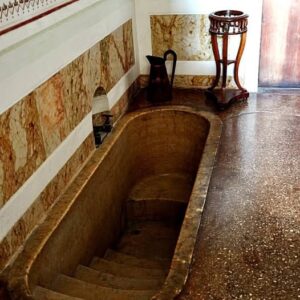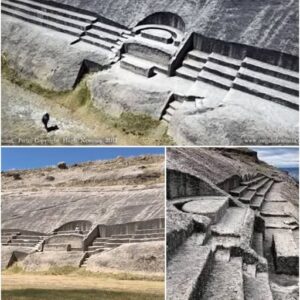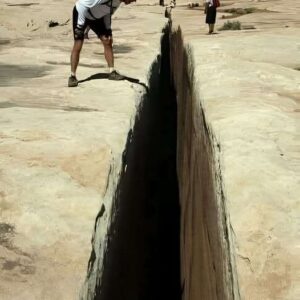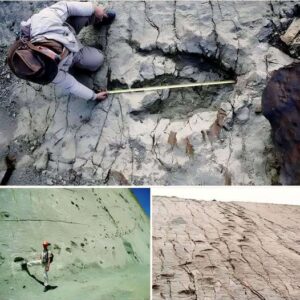In the rugged terrain of Wadi Mathendous in Libya lies a fascinating piece of history etched in stone – an ancient petroglyph over 8000 years old. This remarkable discovery showcases the now-extinct Syncerus antiquus, an African bovid known for its extraordinary horn cores that could reach lengths of up to 3 meters.
The portrayal of Syncerus antiquus in the petroglyph provides a glimpse into the rich biodiversity that once thrived in the region. This majestic creature, with its massive horn cores, roamed the African landscape thousands of years ago, leaving its mark on the history of Wadi Mathendous.
The significance of this petroglyph extends beyond its age and artistic value. It serves as a poignant reminder of the interconnectedness between humans and the natural world throughout history. The presence of Syncerus antiquus in the petroglyph highlights the reverence and admiration ancient civilizations held for the wildlife that surrounded them.

The intricate details captured in the petroglyph speak volumes about the skill and craftsmanship of the individuals who created it. The careful portrayal of Syncerus antiquus with its distinct horn cores reflects a deep understanding and appreciation for the animal’s unique features.
The discovery of this ancient petroglyph sheds light on the cultural and historical heritage of Wadi Mathendous, offering insights into the lives of the people who once inhabited the region. It serves as a testament to the enduring legacy of the ancient civilizations that thrived in this part of the world.
As we marvel at the beauty and precision of the petroglyph depicting Syncerus antiquus, we are reminded of the importance of preserving and protecting our natural heritage. This ancient artwork serves as a symbolic link to the past, connecting us to a time when human existence was intricately intertwined with the wonders of the natural world.
In conclusion, the 8000-year-old petroglyph of Syncerus antiquus in Wadi Mathendous, Libya, stands as a testament to the enduring legacy of ancient civilizations and the remarkable biodiversity that once graced the African landscape. It serves as a poignant reminder of our shared history with the natural world and the need to cherish and safeguard our heritage for future generations.





